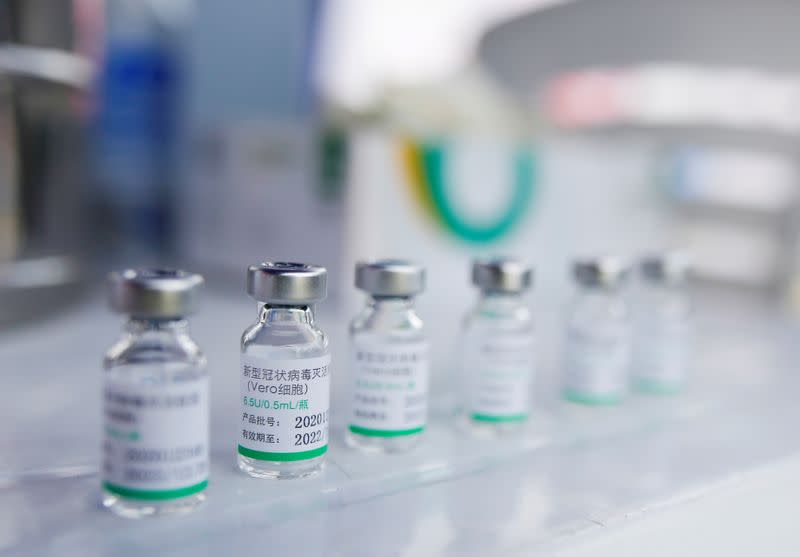(This story corrects the last paragraph to read China promised to donate vaccines to several countries, and did not deliver)
BEIJING (Reuters) – More than 43 million doses of COVID-19 vaccine from China’s state-sponsored China National Pharmaceutical Group (Sinopharm) have been used, including more than 34 million administered in the country and the rest overseas, official media said Sunday .
China National Biotec Group Company (CNBG), a Sinopharm unit, has two COVID-19 vaccines. One was developed by the Beijing unit and has been approved for general use in China and emergency use in several countries, including Iraq, Pakistan and Morocco.
The other vaccine, developed by CNBG’s Wuhan unit, also received China’s green light for emergency use, targeting groups at higher risk for virus exposure.
“To date, more than 43 million doses of Sinopharm CNBG vaccines have been used … with more than 34 million doses administered within China,” China Central Television (CCTV) said.
Apart from the two products, China has two more vaccines – developed by Sinovac Biotech and CanSino Biologics – that have been approved overseas because they increase the supply for developing countries that have an increase in coronavirus infections.
These vaccines can be stored at normal freezer temperature, making them a potentially attractive option for many developing countries, struggling to use competitive products, such as Pfizer and Moderna vaccines, which require much colder temperatures for long-term storage.
His foreign minister said last week that China was offering vaccination to 53 developing countries.
Indonesia is one of the largest buyers of Chinese vaccines with a deal for 125 million doses of Sinovac vaccine.
China has promised to donate vaccines to several countries, including Pakistan, the Republic of the Congo, Equatorial Guinea and Namibia, because it aims to cultivate goodwill among lower-income countries.
(Reporting by Roxanne Liu and Ryan Woo; Editing by Miyoung Kim and Raju Gopalakrishnan)
